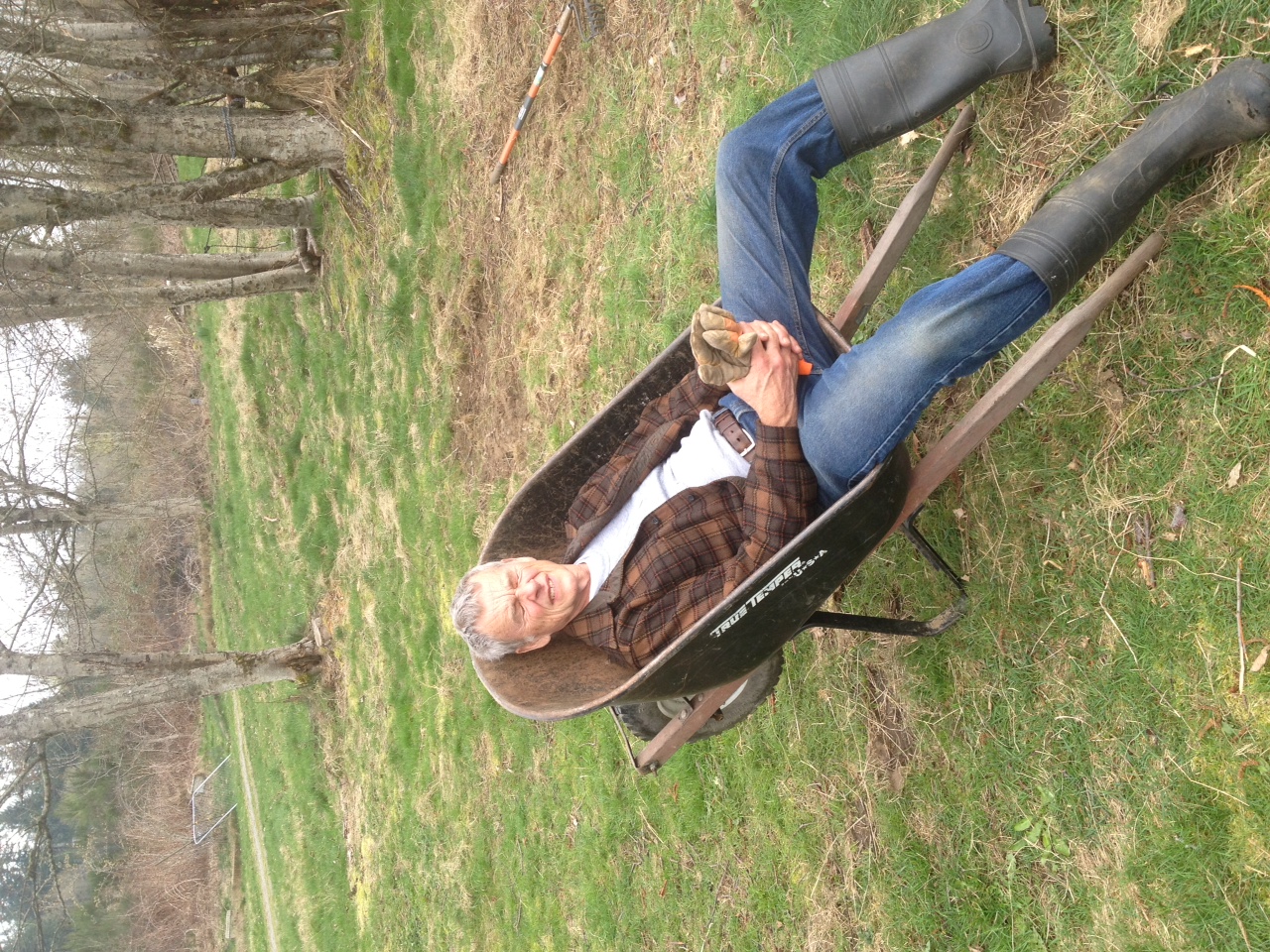Micro-habitat
- Ken Campbell

- Jul 12, 2022
- 4 min read
Soggy Bottom Farm possesses a plethora of habitats: open meadows, dense forest, creek-side riparian areas, alder/willow marsh, overgrown fence lines, etc. Within each of these major habitat types, there are innumerable smaller habitats. A class of habitats that I want to explore here are neither micro nor macro but rather medium-sized. These are spaces about the size of a large room in a house and are delimited by the proximate brush, trees, and grass. The particular habitat I want to discuss came to my attention when I noticed that the local insect-eating birds used its space in a very special way.

I will designate the habitat of interest as MSH-1. It exists under the browse line on a clump of 5-6 cottonwood trees and above the pasture grass that grows under these trees. (Picture 1) The air space of MSH-1 approximates the volume of a large room and is in open communication with the surrounding air. The pasture on the floor of MSH-1 is distinctly different than the surrounding pasture: the grasses are of a different species mix and are shorter with fewer seed heads. Further, there are virtually no buttercups on the floor of MSH-1 in contrast to the rest of the pasture where buttercups are prevalent. The soil on the ground of MSH-1 appears to be better drained than the soil in much of the rest of the pasture which is wet and boggy during the late spring when this episode takes place. The unique pasture vegetation in MSH-1 is no doubt influenced by soil drainage and by the shade cast by the overhead cottonwood trees.
One afternoon, I noticed a flycatching bird perched on a broken limb protruding into MSH-1 space. The bird was not one that I often see around here; it was a member of the family of birds referred to as “Tyrant Flycatchers”. Specifically, it was a Western Wood-pewee. These are small, nondescript, grey birds that closely resemble many of their relatives within the family. Distinguishing between the various species in this group is a challenge for even expert birders. But I have an excellent camera with a telephoto lens and with it, I obtained a fairly good picture of this bird. (Picture 2) I even got a picture of the bird sallying forth from its perch and catching an insect. (Picture 3) Comparing my picture with pictures in the bird books convinced me that the ID of this bird as a Western Wood-pewee is as close to definitive as one can get.
Now, the interesting part of this story is related to the fact that the pewee appears in the MSH-1 only on rare late afternoons; otherwise, I never see it. This compares to another dedicated insect eater, the swallows, which are found working the entire air space above the pasture all day every day. If you want to know where the flying insects are in the air column above the pasture, look at the swallows. Sometimes they are working the air 40 to 50 feet above the pasture; sometimes they work the space 5 to 20 feet above, and sometimes they skim the tops of the pasture grass taking bugs as they emerge out of the foliage. Swallows do not spend inordinate time where there are no bugs and thus tend to be concentrated in the part of the air column where capture and feeding are most productive.
The pewee and the swallows, both of which capture and eat flying insects, go about their business of obtaining a meal in very different ways. The pewee takes a perch in its hunting territory and then sallies forth to snatch a bug in the air as it comes in close proximity. It then returns to the perch and repeats the maneuver when the next bug appears. Swallows on the other hand hunt on the wing. They are constantly zooming through the air in a zig-zag pattern snagging bugs at every twist and turn. Swallows are high-speed hunters that don’t perch in their hunting grounds.


The proclivities of the swallows tell me something about the MSH-1 habitat. Normally, the swallows show no special interest in MSH-1. However, every time that I have observed the pewee working MSH-1, the swallows are working that airspace too. (Pictures 4 & 5) When the pewee is not there, the swallows are also not there. It is not the pewee that attracts the swallows to MSH-1, it is the insects that the pewee eats that are the attractants. Both species of birds are feeding on the same population of bugs. And that population emerges into the air space of MSH-1 only at certain times. The sharp-eyed pewee and swallows show up when the bugs show up and then they all converge in MSH-1. No bugs, no birds.
So, what is the bug that attracts the birds to this unique spot? From the photographic station where I observe the birds feeding in MSH-1, the bug is invisible. Thus, it must be small. When I investigate MSH-1 close-up, I find no trace of an insect nor can I find anything to suggest a particular type. What I know about entomology wouldn’t fill a thimble, so I can’t find a suggestion for a possible insect candidate from that source. I must rely on the birds to tell me that something unusual and unique is taking place in MSH-1. They tell me that periodically a small flying insect emerges from the vegetation surrounding MSH-1 in such numbers that these bugs provide a ready food source for fly-catching birds. I’ll take their word for it.
To summarize, Soggy Bottom farm is a mosaic of habitats: large, medium-sized, and small. What takes place in those habitats can be, and often is, unique and interesting. Sometimes we can learn about the habitats by watching the birds that use them. There is enough variety here to keep a person interested for a long time.










Comments